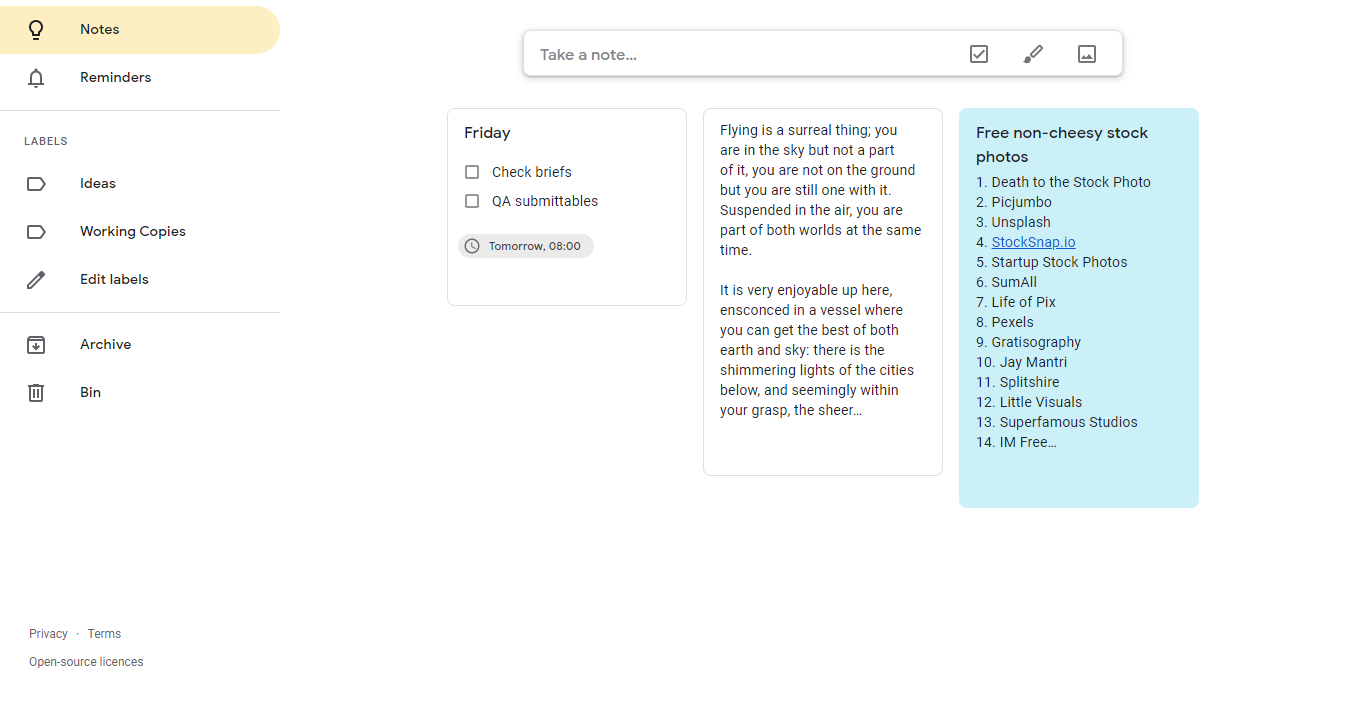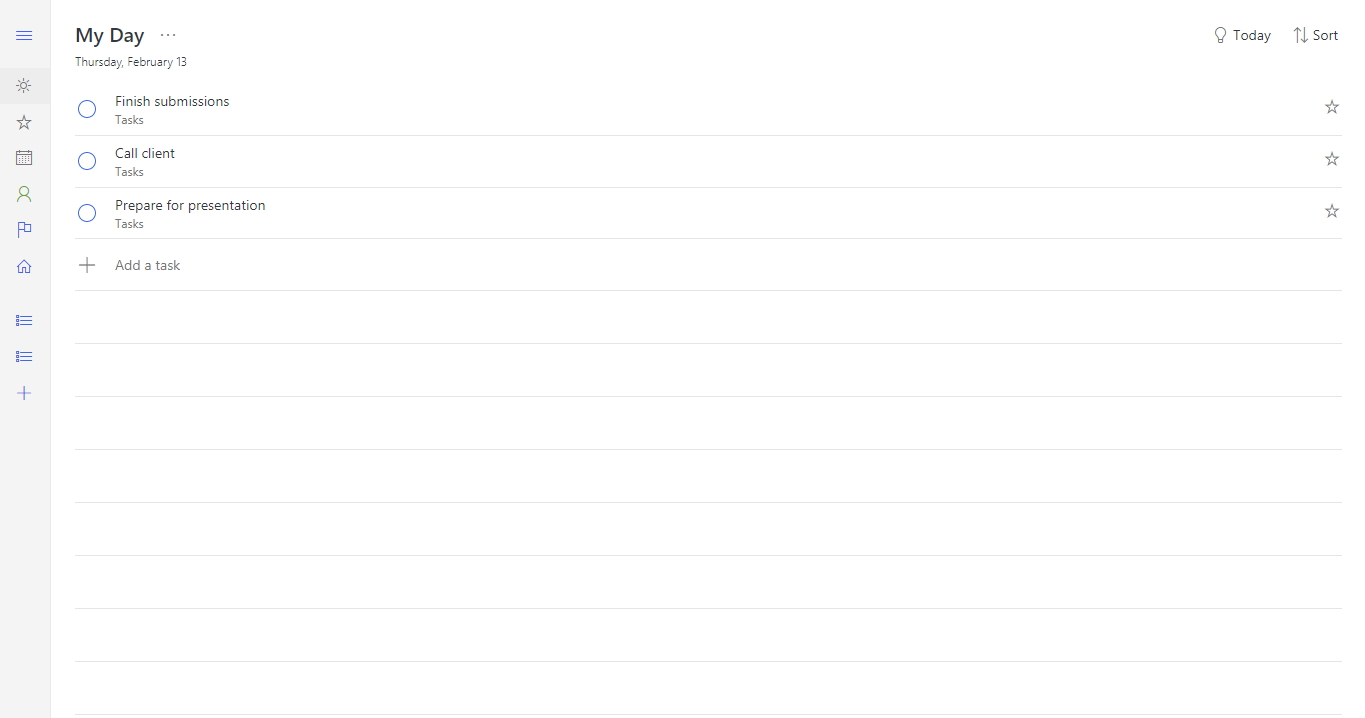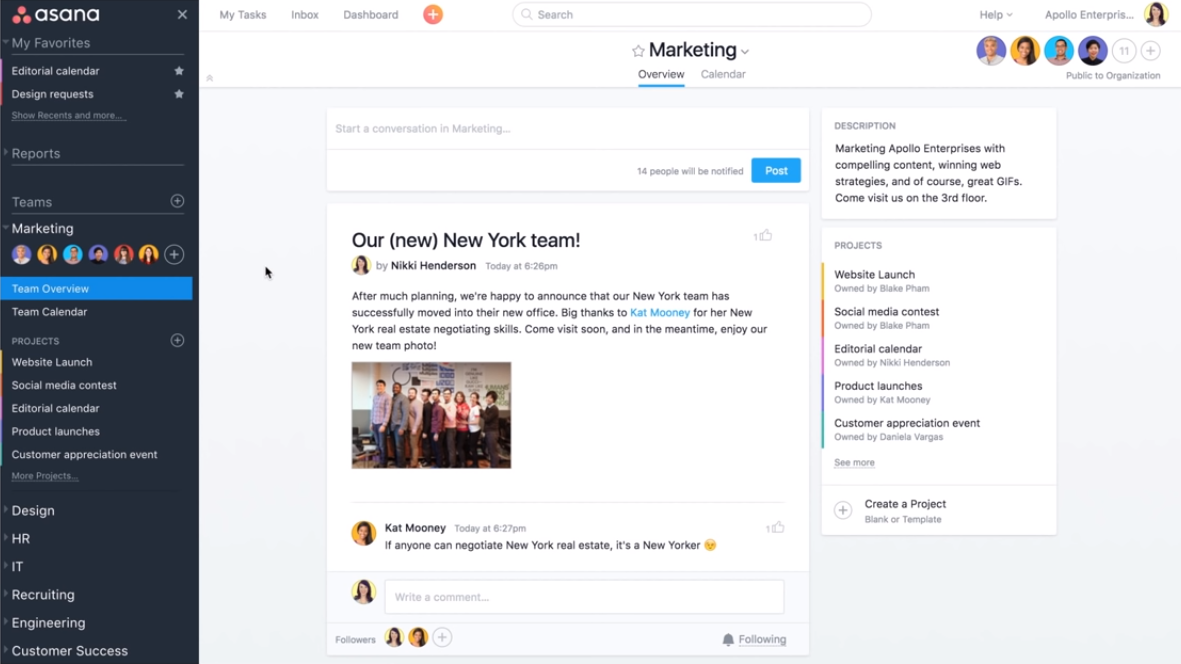In any business, a systematized workflow is needed to meet the demands of clients. That means keeping track of tasks. The only problem is if you are relying on spreadsheets, post-its, and emailing, details can fall through the cracks. As a result, you will have to revise a nearly-complete output or, worse, go back to the drawing board. Either way, your budget will undoubtedly take a hit.
What’s more, your client will be unhappy with the delay. The result? Your reputation can be affected, and your business can have financial difficulties.
Luckily, such a bleak scenario can be avoided using task management software. These outline the things you have to do and see how they are related so you can have a consolidated strategy. You can set deadlines and milestones. And because details of tasks are visible, you can hold team members accountable.
Task management solutions vary a lot, from the feature-rich to the pared-down software. However, they share common features, and there are baseline benefits to be had in using this type of tools.
What is Task Management Software?
Task management software is often a part of project management software or a standalone application. But while the latter focuses on the macro, the former helps you do things bit by bit with a micro approach. With this, you can set doable deadlines. It also offers visibility when it comes to related tasks so you can see the whole picture. But this kind of software solution goes beyond that. It is even capable of helping you stop issues before they occur through its analytics and reporting tools. Thus, you are better able to complete tasks without sacrificing quality.
List of Best Task Management Software
It can be challenging to find the right one because there are so many, so we are helping you by narrowing down the list:
-
- Asana: This leading project management software is the universal solution to your project and task management woes. You can create projects and add tasks under them. Follow-ups are easy, and comments are visible and trackable. With this, you can do away with long email threads. You can start with the free Basic plan and move up for the Premium Plan starting at $10.99 per user per month, billed annually.
- Todoist: This popular to-do tracking app helps organize tasks and alerts you of upcoming deadlines. What makes it unique is the various plugins that connect it to other platforms, making it popular among a wide array of users. Todoist Premium starts at $3 per month, also billed annually.
- Google Keep: This application lets you organize tasks with post-its. That is the electronic ones. You can change the colors of the post-its according to your system. You can even change their format from simple text to checklist. Since it is part of the Google company, it is accessible to Google and Android users. Google Keep has a free version and a premium version included in the Google Suite.
- Evernote: One of the stalwarts of note-taking and task management niches, this solution lets you organize and manage tasks through checklists. Everything is also searchable, so you do not have to spend a long time browsing through your notes. Evernote has a Basic version for free; the Premium plan starts at $7.99 per month.
- Microsoft To Do: This cloud-based app lets you plan your day smartly. Though it is mainly in the cloud, it has apps for Windows, Android, and even iOS as well. Because of this, you can keep track of your tasks, whichever device you are on. Microsoft To Do is completely for all versions.
- monday.com: This highly visual collaboration software serves as a task and project management tool as well. It is very customizable so it can suit every workflow. Basic monday.com plan starts at $39 per month, billed annually.
- Zoho Projects: Another product by a big player in the software development arena, Zoho Projects allows you to oversee tasks and projects online and to collaborate with your team at any time. Zoho Projects pricing starts at $18 per month for 6 users.
- Mavenlink: By using this solution, you can unite different parts of your project management such as time-tracking and resource planning and allocation. Mavenlink pricing starts at $19 per month for 5 users.
- Clarizen: If you are looking for flexibility, this tool has your back. It enables you to make changes to your tasks and projects any time, whether it is the deadline or the budget. Clarizen pricing is available for its Enterprise and Unlimited editions, both of which are by quote.
- Wrike: Visibility and control are what this project management application offers. With this, you can track time and organize different facets of your project. It also sports an interactive timeline that shows every activity and deadline. Beyond a basic free version, pricing for Wrike starts at $9.80 per user per month for the Professional version.
- nTask: is a powerful project and task management software that enables your teams to collaborate, plan, analyze, track and manage everyday tasks. It organizes tasks online and visualizes progress with our all-in-one task management tool. nTask Premium plan starts with $3 per user per month, billed annually.
- Teamwork: This is a project management tool that allows you to see everything in one place so you can effortlessly manage your team, tasks, clients, and freelancers. With Teamwork, you can quickly report on how tasks are progressing, spot bottlenecks before they happen, and get a more holistic view of your workload. Teamwork has a Basic version for free while the Premium plan starts at $8 per month.
How does Task Management Software work?
To-Do Lists
A task management application primarily assists you in keeping track of tasks you need to do, review, and close. Different vendors have their own ways of designing an interface that would make things easier for you. You can have simple to-do or checklists or interactive drag-and-drop notes or task lists.
Team Activities Visibility
There are sophisticated task management solutions that give you the whole picture. If you have tasks listed under a project, you can see the overall progress as well as the detailed progress of each task. This enables you to act immediately when you see team members lagging.
Reports and Analytics
How efficient and productive is your team in finishing assigned tasks? You can find out with the task management solution’s reporting and analytics module. However, not all platforms have robust and in-depth reporting.
Who is Task Management Software for?
Task management software is created for all organizations, as well as small teams and individuals.
- Solo professionals. Even individuals who go at it alone need a tool to keep track of things they have to do. There are free solutions for this audience while there are paid applications that offer more flexibility.
- Any-size organization. Teams, regardless of size and industry, can primarily benefit from a task management app. It can keep things in perspective and allow project managers to find loopholes. As a result, they can bridge gaps and ensure that tasks are completed still in time to satisfy customers.
What are the types of Task Management Software?
There are different types of task management software based on their deployment and their methodology:
- Cloud-based task management software. This type is accessible from an internet browser, which means you only need a stable internet connection to utilize it. You can use it on any device, too. There are now solutions that have offline functionalities, though, enabling you to employ them even when you have no internet. On top of it all, they usually have mobile app versions.
- Desktop-based task management software. This is the typical software that you need to install on your PC or Mac. Depending on the vendor, it can have a cloud tie-in or a mobile app. But if the latter two are not available, it means you can only work with it in the device you installed it in.
- Agile/Kanban/Waterfall/etc. task management software. There are software dedicated to teams that use certain project management methodologies such as agile, kanban, and waterfall.

Google Keep is an example of task management software that you can use on the web, offline on Chrome, and has a mobile app.
What features can you expect from a Task Management Software?
- To-do lists. This feature lets you list down tasks you have to do and tick them off one by one as you finish working on them.
- Bird’s eye view. If your task is part of a larger project, you can see how it relates to other tasks.
- Auditing. Compliance with regulations is essential, and you can monitor it using a task management app.
- Document management. Documents are usually a part of tasks, so if there are any, you can attach them directly to tasks or projects.
- Integrations. Streamlined data is now within reach because of the integration capabilities of task management systems.
- Mobile adaptability. Many employees work on the go, so it is important that they can check their tasks while mobile. As such, vendors now offer mobile apps for their solutions. If there is none, they ensure that their app is adaptable to mobile screens.
What are the latest trends in Task Management Software?
- User-based pricing is common in task management systems. Before you add more users, check your current plan first to avoid surprises in the next billing period.
- Free task management apps are becoming more prevalent and are attracting freelancers and small businesses. Unfortunately, some projects are open to more security threats.
- Collaboration never goes out of trend. Developers are continuing to integrate tools and features that further smoothen teamwork.
What are the benefits of Task Management Software?
- Centralized tasks. With a task management software, you can create tasks and assign them to different team members from a single interface.
- Milestones and deadlines. Task management applications come with features that enable you to set deadlines and milestones. This way, team members can work hard to meet those dates.
- Boosted productivity. In 2019, organizations lost 12% of their investment because of less-than-ideal work outputs. A task management solution can prevent that from happening because it allows employees to jump from one task to the next seamlessly.
Are there issues that you can encounter with Task Management Software?
A task management system’s primary goal is to streamline task tracking. Still, there are concerns that you need to be aware of.
- It sends email notifications. The purpose of a task management app is moot if it notifies you of new tasks and updates via email. When choosing a solution, make sure it serves alerts in-app or sends them to your desktop’s notification feed.
- It has no communication tool. If an app does not have a commenting or chatting tool, you will still be relegated to email for updates, resolutions, and other task-related communications. This is redundant, so choose a platform with either or both features.
What should you consider when choosing a Task Management Software?
When shopping around for a task management solutions provider, there are additional things you have to consider:
- Team size. Some software are designed for small teams, for solo users, or multiple groups in the same company. Because of that, features and prices can vary widely. So even if a solution attracts your attention, you have to find out whether it has the right features for your team size.
- Methodology. While many applications are for general task management, some are designed to help a single methodology in mind. Read more first about the solution or ask the vendor to avoid purchasing a platform that is not right for you.
- Scalability. Do you aim to have a larger team size in the future? If you do, it would be best to choose a vendor that has scalable plans. This way, you do not have to switch once you outgrow your current plan.
Get to know your vendor well
While collaboration in one platform is awesome, it can be problematic when it comes to security. It would serve you well if you research your vendor’s security measures. By doing so, you can be prepared for any security case, such as power outages or calamities.
Also, try out software solutions before paying up. Give your employees a chance to offer their opinions. After all, they would be the ones using the platform mostly.


